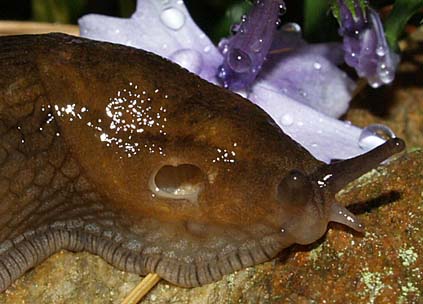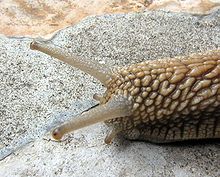Adaptation
Modifications have evolved so that snails could go from an aquatic environment to a terrestrial environment. One of these include a loss of their ctenidia (a comb like gill) to an air breathing lung (Perez 2011). With their reduced ctenidia (now an air breathing lung) they are protected from the dry environment by having air diffuse into the body through pallial cavity wall tissues.
Other Modifications that have come have been as a result of snails evolving to living on land. They include adaptations to preserve water. One example is that the terrestrial snails have a thicker mantle acting as a barrier to evaporation. They also breathe air through a pneumostome that is closed when not active to reduce the amount of water lost through respiration (Nordsieck, 2011).
Snails also have the ability to prevent water loss by simply moving down into a moist habitat such as a leaf litter. Like other gastropods snails move by using their "stomach foot". They also use this for locomotion by sending down waves and "crawling" forward. (Nordsieck, 2011). If you have ever picked up a snail you will notice the slimy coat surrounding it. This also acts as an added barrier to prevent evaporation.
In this photo you can see the pneumostome. (opening behind the head).
Photo taken by: Aydin Ortan
Snails have the ability to touch, smell, taste and sense light though special photosensory and chemosensory cells located in the head (Perez 2011). These receptors are located on either side of the anterior head region. On the picture below it would be just above the head portion of the snail.

